Coimbra is a charismatic Portuguese city located approximately 128 miles (205 km) north of Lisbon in the Centro region of Portugal. Coimbra and its surrounding towns were inhabited by several societies over the past 2,000 years. Celts, Romans, Barbarians, Moors, and Spanish each settled in Coimbra before King Afonso Henriques established Portugal as an independent kingdom in 1139. He declared Coimbra the capital of Portugal, a title that lasted only until 1225. King Afonso remains buried in Coimbra’s Santa Cruz Monastery to this day.
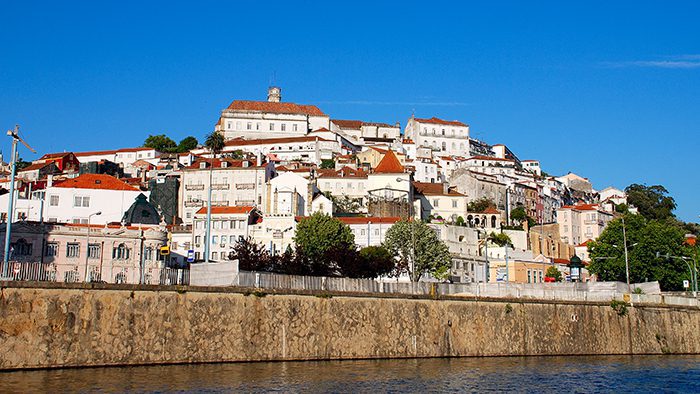
The University of Coimbra was established in 1290, making it the oldest school of higher education on the Iberian Peninsula, and one of the oldest universities in the world. The school’s 20,000-plus students drive Coimbra’s dining and nightlife industries. Coimbra is divided into two sections: the Cidade Alta (upper city) and the lower city located by the Mondego River.
In the middle ages, the distinction between the two sections of the city demonstrated division of the classes. Noble families and clergymen occupied the Cidade Alta while most industrial activities took place downtown. Today, this historical downtown area known as Baixa is a popular neighborhood featuring various restaurants and boutiques.
Don’t forget to explore the nearby towns! Check out our article: 3 Day Trips from Coimbra
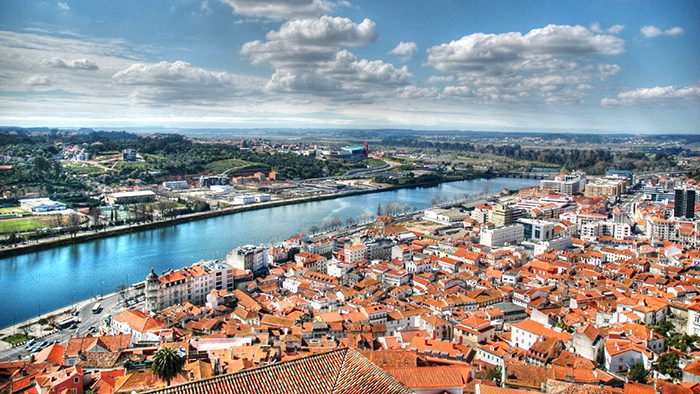
Coimbra has a rich history in the arts. Aside from the architectural landmarks scattered throughout the city, Coimbra boasts its own variety of Fado, a style of music often referred to as the “Portuguese blues.” Coimbra Fado is a sub-genre that features more complex lyrics and multiple guitars. Experiencing a traditional Coimbra Fado show is a true and rare delight, but luckily there are venues in the Baixa quarter that regularly host them.
Check out Things to See and Eat in Leira!

Coimbra is a hilly city so visitors should sport comfortable shoes for walking to and from the different attractions. Notable points of interest include the Church of São Tiago, the Santa Cruz Monastery, Botanical Gardens, the Old and New Cathedral, and the Machado de Castro National Museum that houses an important collection of Gothic, Flemish, Portuguese and Roman works of art.
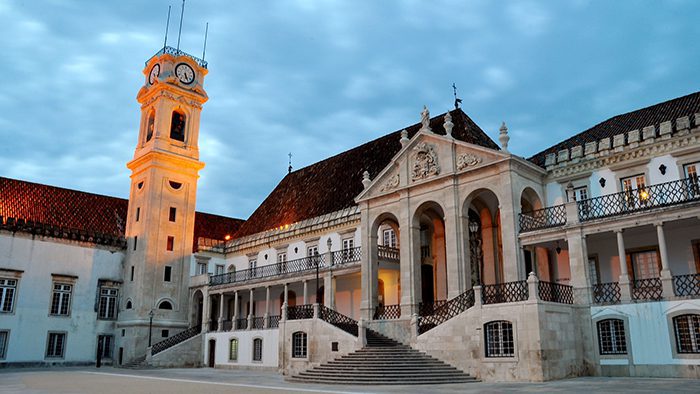
Students from all over the world choose Universidade de Coimbra to fulfill their dreams of higher education. This Portuguese landmark was founded in 1290 by King Denis of Portugal – making it one of the oldest universities in Europe. Like other college cities, Coimbra’s service industries are fueled by the continuous presence of students during the school year, which spans from October to July.

The school boasts a baroque-style library, Biblioteca Joanina. This three-story building holds over 200,000 volumes including bibliographic collections. They must be approved before being checked out because they are held in a temperature and humidity-controlled “book house.” This process is utilized to preserve its collection of 16th, 17th and 18th century-old books.
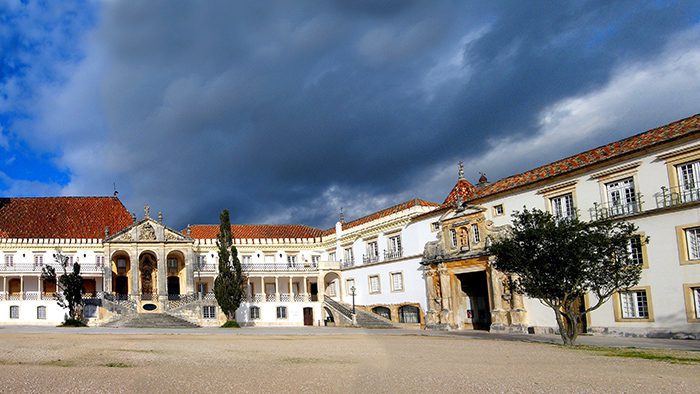
An interesting part of the “book house” is its inhabitants: bats. At night these flying mammals feed on insects that like to chomp away at the old texts. At the end of each day, workers cover the wooden surfaces with leather towels for their nocturnal friends, and then clean the area in the morning before the public arrives. Entrance to the library is free.

Once done rummaging through the antique books, be sure to check out the university’s 33-acre botanical garden located on Calçada Martim de Freitas. Founded in the 18th century, Jardim Botânico has delighted students and visitors for over 200 years with elegant fountains, rare plant specimens and breezy walkways. Because playing outside is so much more fun than studying, right?
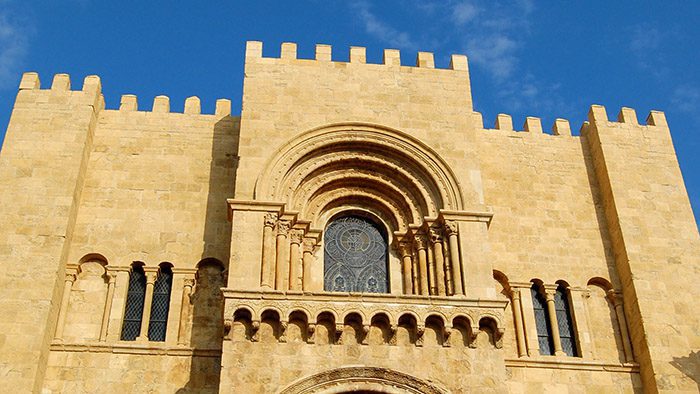
Coimbra’s Old Cathedral was built during the second half of the 12th century and is a major Roman Catholic institution for the city as well as the country. It was built atop the foundation of an earlier Islamic mosque, and many of its architectural features, like the main door for instance, are reminiscent of Moorish design.
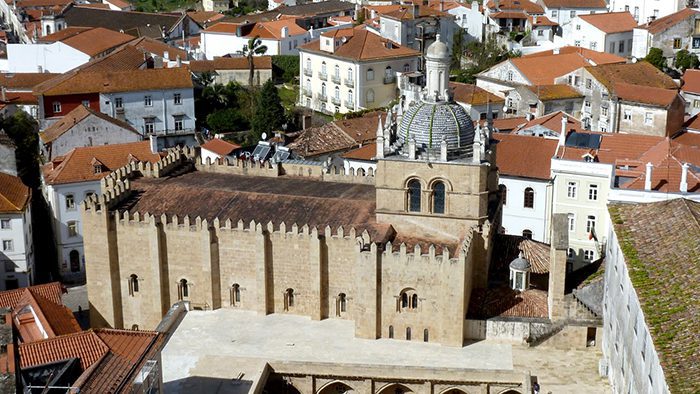
The Old Cathedral’s significance began in 1139 when Afonso Henriques declared himself King of Portugal and Coimbra as his new capital. The structure is one of the few Portuguese Romanesque cathedrals still standing. Its fortress-like exterior is no accident. The years following the expulsion of the Moors from the Iberian Peninsula were perilous ones, which resulted in buildings having to be safeguarded against possible retaliation attempts from the land’s previous residents.
Check out Things You Must Do in Porto!

The interior of the cathedral features later add-ons such as the gothic-style high altars and cloister, and 16th century Sevillan tiles. The Old Cathedral is open everyday from 10 a.m. to 6 p.m., but admission times are subject to change when mass is in session.
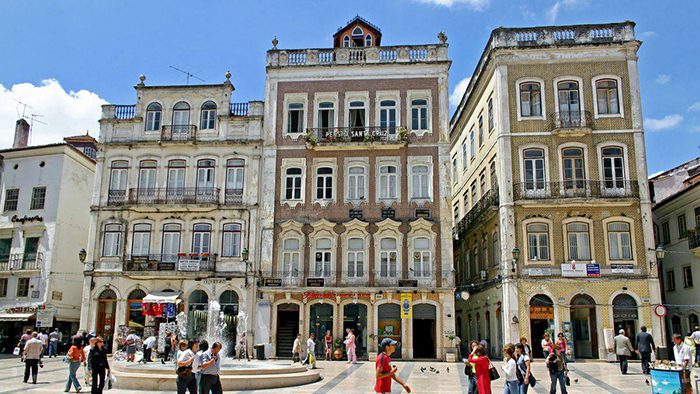
As the main pedestrian street in Coimbra, Rua Visconde da Luz runs through the center of town from the Mondego River until just past the Santa Cruz Monastery. Along the way there are dozens of local business offices, restaurants, tourist shops, cafés and boutiques. At almost any time of day there are dozens of people walking the street running errands or casually strolling. This is a great way to discover the Baixa quarter and pick up souvenirs for people back home.
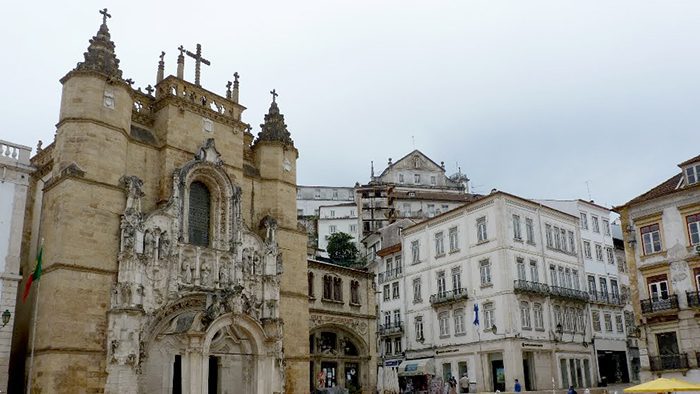
Known as Coimbra’s most important national monument, the Santa Cruz Monastery has been standing since being founded in 1131. It was dedicated to the order of St. Augustine and was used as a meeting place for clergymen and nobles alike, including Portugal’s first king. At the time it was built, the monastery established Coimbra as a legitimate capital and cemented its ties to the Roman Catholic Church. For this, the monastery was granted special privileges by Pope Innocent II, which resulted in a remarkable amassment of wealth for King Afonso Henriques’ budding nation.
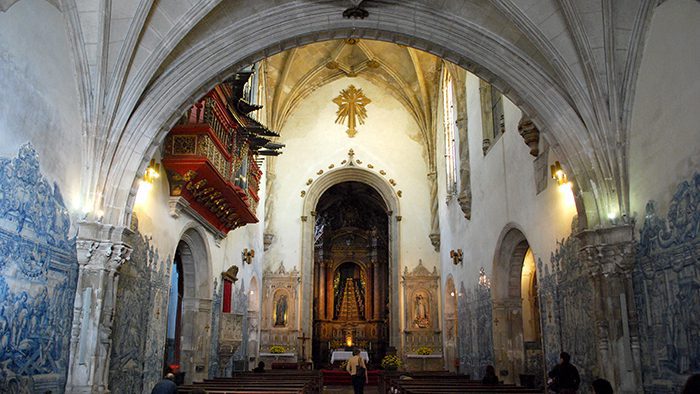
The monastery’s design was dramatically altered in the 16th century by order of King Manuel I of Portugal. Manueline, or Portuguese late gothic style, is an architectural style named after him. As king, he commissioned several exploratory voyages around the world (India, Brazil and Africa), and incorporated the architectural styles of conquered territories into hundreds of churches across Portugal.
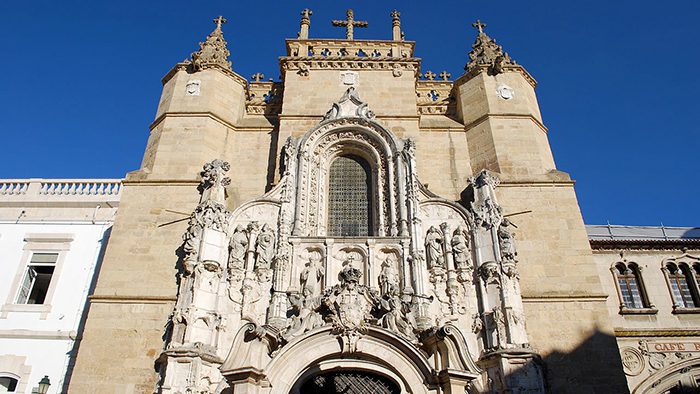
The Santa Cruz Monastery was eventually named National Pantheon because the tombs of Portugal’s first two kings, Afonso Henriques I and his son, King Sancho I, are held there. Tourists come to visit from all over to view the tombs of the kings who loved the monastery so much that they decided it would be their final resting place. The Manga Gardens are located behind the monastery. This 16th century fountain complex is all that remains from an earlier cloister. The Santa Cruz Monastery is open Monday through Saturday 9 a.m. to 12 p.m. and 2 p.m. to 5 p.m.; Sundays from 4 p.m. to 5 p.m. Entrance is free. To visit the sacristy, chapter house and exhibition hall is €2.50.
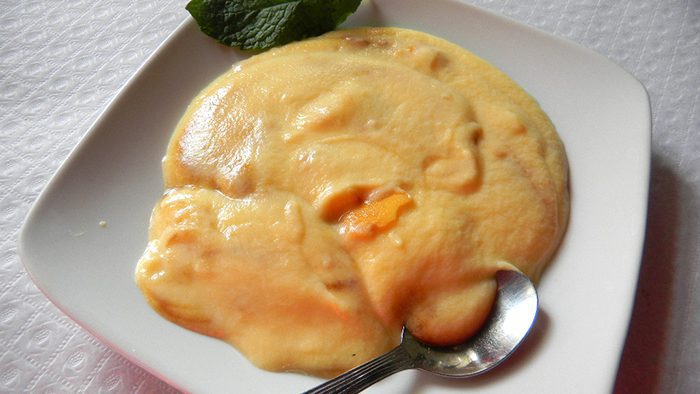
Since 2004, Salao Brazil, or Brazil Room, has been the perfect place to satisfy taste buds while getting a jazz music fix. The exterior of the eatery is a give away that it is situated in a colonial-style, antique building. Salao Brazil is a popular spot for those out and about in downtown Coimbra.

This spacious restaurant, which doubles as a music hall, is located in the heart of downtown Coimbra. During the day, the sun shines through the tall windows and illuminates the dining room. By night, Salao Brazil boasts a sultry vibe as diners sip wine and listen to live music. Salao Brazil has an economical lunch menu at about €5 for a light meal (small entrees, sandwiches and soups).
Best time: Lunch or dinner
Rec’s: daily specials
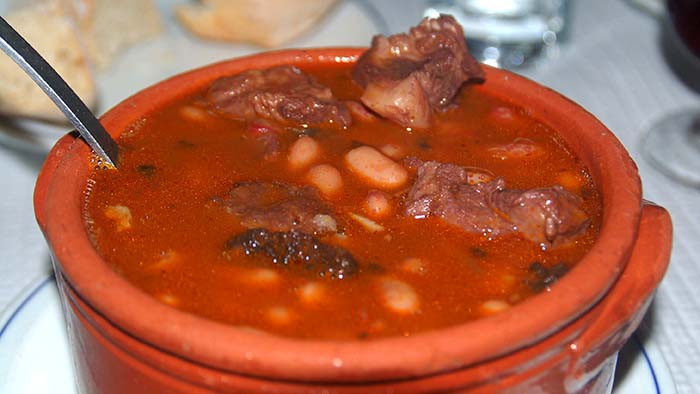
This gem of a restaurant makes up for its peculiar décor with some must-try delicacies. Don’t come expecting the works because what you see is what you get. And what you see are five tables, wooden stools, and walls covered in hand-written notes, poems and scribbles. The only thing that could make you forget you’re eating in a hole in the wall is the food! Zé Manel Dos Ossos does not take reservations, so timing is everything. Although it is unlikely you won’t wait in line at all, getting here around 3 p.m. (after the lunchtime rush), or 7 p.m. are your safest bets.

The food at Zé Manel is tavern fare; mostly meaty stews, hearty soups and fresh fish. Zé Manel also produces and serves its own wine, which is quite strong but goes well with the heavy food. Meals cost between €7 and €10 per person. The restaurant is open Monday through Friday from 12 p.m. to 3 p.m. and from 7:30 p.m. to 10 p.m.. It is only open for lunch on Saturdays (closed Sundays).
Best time: Lunch or dinner
Recs: Pork and bean stew (feijoada), grilled sardines and carapau, wild boar stew with beans, pork with mushrooms
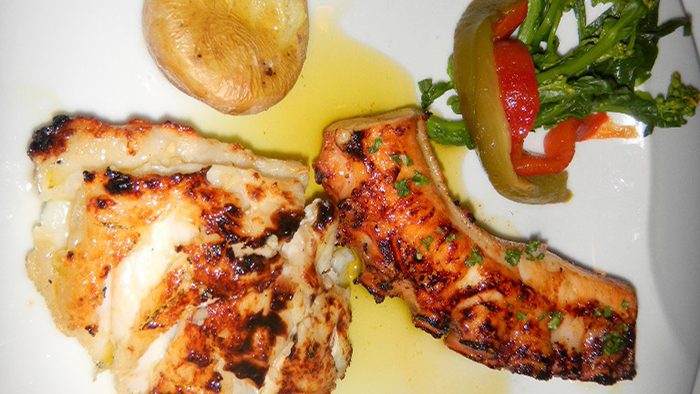
Restaurante A Taberna is an ideal place to sample traditional Portuguese dishes prepared in a wood-burning oven. A Taberna’s home-style dishes of meat, fish, and vegetables have been earning culinary awards and winning the hearts [and stomachs] of patrons since opening its doors in 1982. A Taberna features a family friendly atmosphere, exemplary customer service and a well-rounded selection of food and wine.
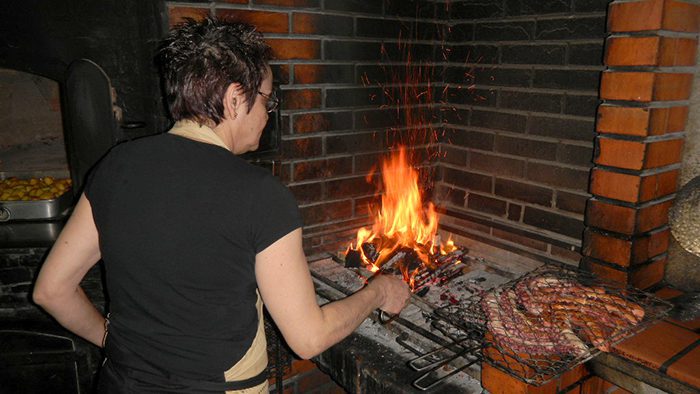
Diners are seated in a warm, inviting dining room that allows clear views of the food prep area and kitchen, which means there are no surprises here. The chef shops for ingredients daily, which means you can expect flavorful, fresh food. A Taberna is located a 20-minute walk east of the University of Coimbra. Hours of operation are: Tuesday through Saturday 12:30 p.m. to 3 p.m. and from 7:30 p.m. to 10:30 p.m. Sundays lunch only (closed on Mondays).
Best time: Lunch
Recs: octopus vinaigrette, posta tras os montes (steak with potatoes), cod with potatoes, chocolate crepe
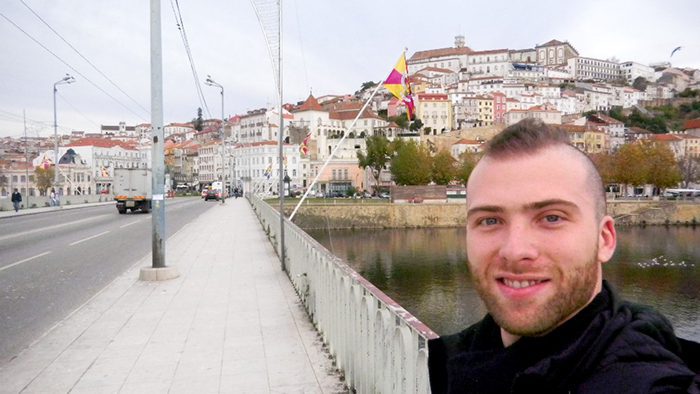
Coimbra, a university town, is one of Portugal’s most beloved cities. There are two sides to the center of this enchanting city. The lower area consists of the Rua Visconde Luz that runs all the way to the river. Along this road you will find the commercial area of Coimbra made up of many cafés, restaurants and shops. If you’re looking for a laid-back day of shopping make sure to add this section of the city to your schedule. A little known shopping opportunity is the Quebra Costas Flea Market, located on the street and close to the bar with the same name (see Nightlife section). This open-air market takes place every Saturday except during winter.
Check out Top 10 Things to See and Do in Evora!
Heading north from Rua Visconde Luz, you will notice that every street’s direction is uphill. This is because the University section of the city is located at the top and offers great views of Coimbra. The highly elevated part of town is where all three of the delightful restaurants I visited are located. Bring good walking shoes!
The site that really stood out in my mind was the Monastery of Santa Cruz. I enjoyed learning about its history and visiting the tombs of the first two kings of Portugal, Afonso I and his son Sancho I. It is an attraction that you can’t miss. It will also please all lovers of architecture and royal history. Since the city has a large population of students, it is good to know that the majority of them return home on weekends. This leaves the city a bit quieter once the weeknight flurries are over. Overall, I thought Coimbra was a town with many hidden surprises. The lively energy felt from the students resonates in the streets and in the air. I recommend visiting during the early summer months so that you can enjoy the beaches in Figueira da Foz, and still experience pleasant weather everywhere else.
Located near Coimbra, Conímbriga is one of the largest and best-preserved Roman settlements in Portugal. Visitors can explore its intricate mosaic floors, thermal baths, and the remains of an amphitheater.
Time Zone: GMT +1
Getting around: The best way to get around Coimbra is by walking. Parking can be a hassle, so if you have to park overnight, use one of the many underground garages. Free bicycle rentals are available on weekends in the Parque Verde do Mondego. The Funtastic bus is a hop-on hop-off ride that goes on a one-hour long loop through the city, stopping at several points of interest. Tickets can be purchased once aboard the bus, which leaves from Largo da Portagem. Tickets cost €10 for adults and €5 for children 4-12 years.
Shopping: Coimbra has great finds, if you don’t mind looking. Praça do Comercio has small boutiques, as does the Baixa quarter. Dolce Vita is a large mall located close to the sporting arena on Rua General Humberto Delgado. It has over 65 stores, various restaurants and a cinema.
Hours of operation: Typical hours of operation are from 9 a.m.-1 p.m. and from 3 p.m.-7 p.m. Monday through Friday and Saturdays from 9 a.m.-1 p.m. Museums are closed on Mondays.
Nightlife Overview: Bar hopping is unquestionably a big part of nightlife in historic Coimbra. After a long day of academics, students and professors alike can be found unwinding at some of the local bars surrounding Praça da República. Along with the students, you will find throngs of locals and tourists who drink, gossip and laugh together in the city’s welcoming environment.
Since Coimbra is a thriving college city, the large student population contributes to the bustling nightlife. The lively, and sometimes rowdy, students will make sure you know you’re in a college town. Visitors will be pleased to know that there are many bars located around the Sé Velha and its square, Largo da Sé Velha. Most of Coimbra’s bars remain open until 2 a.m.
A Capella (Rua Corpo de Deus-Largo da Vitoria Capela Nossa Sr da Victoria) is a lounge that features live Fado shows. The Fado group, Quinteto de Coimbra Fado House, opened the venue in 2003 as a way of introducing non-locals to Coimbra’s distinctive sounds. It is one of the most popular venues for listening to Coimbra Fado music and has already attracted over 70,000 tourists.
Via Latina Nightclub (Rua Almeida Garrett) is a fun and lively club and a favorite spot for students. It features two sections; one that plays disco and house music, and a second in which guests can enjoy coffee. During the week, especially on Tuesdays and Thursdays, Via Latina is packed. Fridays feature live music, but make sure to call ahead for their schedule of DJ’s and bands.
Quebra Costas (Rua do Quebra Costas, 45) has been open since May of 1984. It is located between the commercial downtown area of Coimbra and the medieval uptown. It is one of the oldest and most charming pubs in town. You’ll find many generations of locals and tourists enjoying the laid back environment that this pub offers. Quebra Costas features an open-air terrace and modern décor. It is open Monday through Saturday from noon to 4 a.m.
Check out some tours you can book in Portugal here!
Currency: Euro.
Currency converter: XE
Best time to go: The month of May during the “burning of the ribbons.” University students burn their gowns and ribbons to signal the end of the academic year.
What are your recommendations for what to see and eat in Coimbra? We would love to hear from you! Leave us a question or comment below.
Counter
101 Countries • 1432 Cities
Stefanos says:
There’s a beautiful wine bar on the way to the old town called “Vinharia da Se”. It’s tiny, really comfy and you can taste some Portuguese wines there along with traditional finger food (cheeses etc) while listening to jazz/60’s/rock&roll music. Absolutely adorable!
David says:
Hi Stefanos, Thanks for your comment and my apologies for getting back to you so late 🙁 Thanks for the tip!